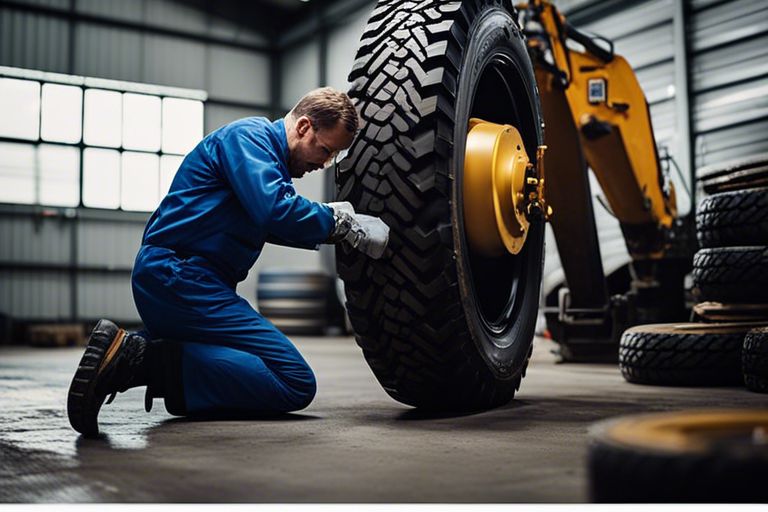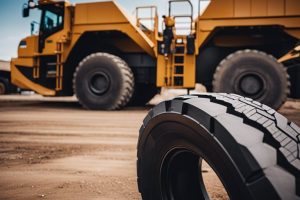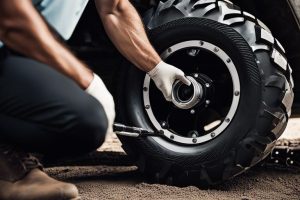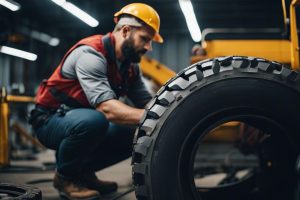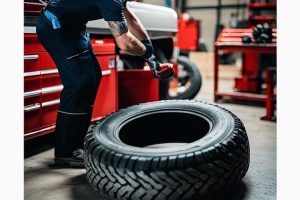Embark on a journey to master the art of maintaining Off-the-Road (OTR) tires with our comprehensive guide. OTR tires play a crucial role in heavy machinery operations, and neglecting their maintenance can lead to costly repairs, accidents, and downtime. In this guide, you will discover vital tips and tricks to ensure your OTR tires are in top condition, including proper inflation, regular inspections, alignment, and storage practices. Stay ahead of the curve and safeguard your equipment with our expert advice.
Key Takeaways:
- Regular inspections: Perform routine checks on OTR tires to ensure they are in good condition and properly inflated.
- Proper storage: Store OTR tires in a cool, dry area away from direct sunlight and the elements to prevent damage and extend their lifespan.
- Maintenance schedule: Establish a regular maintenance schedule for OTR tires, including rotations, alignments, and balancing, to maximize performance and safety.
How-To: Getting Started with OTR Tire Maintenance
It is crucial to establish a solid foundation when it comes to maintaining OTR (Off-The-Road) tires. Proper maintenance not only extends the lifespan of the tires but also ensures safe operations on heavy-duty equipment. This guide will take you through the imperative steps to get started with OTR tire maintenance.
Identifying When Your Tires Need Maintenance
Need Regular inspection of your OTR tires is key to identifying when maintenance is required. Look out for signs of wear and tear, such as uneven tread wear, cuts, punctures, or sidewall damage. Any of these issues can compromise the performance and safety of the tires. Additionally, monitor air pressure regularly as underinflated or overinflated tires can lead to premature wear and potential blowouts. Keeping a close eye on the condition of your OTR tires will help you spot any issues early on and address them promptly.
Setting Up a Maintenance Schedule
Need Establishing a maintenance schedule is imperative for the longevity of your OTR tires. Create a routine that includes regular inspections, tire rotations, alignment checks, and pressure monitoring. Depending on the operating conditions and usage of your heavy equipment, the frequency of maintenance may vary. Consult the manufacturer’s guidelines for recommended maintenance intervals and adhere to them diligently. By setting up a structured maintenance schedule, you can proactively address any issues and ensure optimal performance from your OTR tires.
Schedule Consistency is key when it comes to tire maintenance. Make sure to record all maintenance activities, including inspections and adjustments, to track the performance of your OTR tires over time. A well-maintained tire not only improves safety but also enhances the efficiency of your heavy-duty equipment. Prioritize regular maintenance to prevent costly downtime and ensure smooth operations in challenging work environments.
Tips for Daily OTR Tire Care
You know that OTR tires are a significant investment for your operations, so it’s vital to maintain them properly. Daily care and attention to your OTR tires can prolong their lifespan and save you money in the long run. Here are some tips to help you keep your OTR tires in top condition:
- Check tire pressure daily to ensure optimal performance and prevent damage.
- Inspect tires for cuts, punctures, or signs of wear and tear that may lead to tire failure.
- Clean tires regularly to remove debris and prevent it from causing damage.
- Rotate tires at regular intervals to promote even wear and extend tire life.
- Monitor tire balance to improve safety and prolong tire lifespan.
Routine Inspections: What to Look For
To ensure the longevity of your OTR tires, it’s crucial to conduct routine inspections. Look for uneven wear patterns, bulges, or cracks on the tire surface, which could indicate potential issues. Additionally, pay attention to any foreign objects lodged in the tires that may cause damage.
Regularly inspecting your OTR tires can help you catch problems early and address them before they escalate, saving you time and money in the long run. This proactive approach to maintenance is key to maximizing the lifespan of your OTR tires.
Preventative Measures to Extend Tire Life
Tips for extending the life of your OTR tires include proper inflation, regular tire rotations, alignment checks, and maintaining correct load capacity. Implementing these preventative measures can significantly increase the lifespan of your tires and improve overall performance.
It is crucial to follow the manufacturer’s guidelines for tire care and maintenance to ensure optimal performance and safety for your OTR tires. By taking proactive steps to care for your tires, you can maximize their lifespan and reduce downtime due to unexpected tire issues.
Factors Affecting OTR Tire Longevity
Once again, understanding the factors affecting the longevity of your OTR tires is crucial in maximizing their lifespan and performance. By taking into account various elements that impact tire wear and tear, you can implement the necessary measures to extend the life of your tires and ensure optimal performance on the job site.
Environmental and Operational Factors
For OTR tires, environmental and operational factors play a significant role in determining their longevity. Factors such as temperature fluctuations, exposure to UV radiation, abrasive surfaces, and prolonged periods of storage can all contribute to premature tire wear. Additionally, the terrain in which the tires operate, the frequency of use, and the load capacity they bear also influence their lifespan.
- Temperature fluctuations can cause rubber to expand and contract, leading to cracking and deteriorating tire integrity.
- Exposure to UV radiation can break down the rubber compounds in the tires, causing them to become brittle and prone to damage.
- Abrasive surfaces can accelerate tire wear, especially on the tread, reducing traction and overall performance.
Thou, it is important to store OTR tires in a cool, dry place away from direct sunlight when not in use. Regularly inspecting tires for wear and tear, maintaining proper inflation levels, and rotating them periodically can also help mitigate the effects of these environmental and operational factors.
Load, Speed, and Pressure Considerations
Tire load, speed, and pressure considerations are key factors that directly impact the longevity of OTR tires. The weight and distribution of the load, the speed at which the tires are operated, and the inflation pressure levels all play a critical role in determining how well the tires wear over time.
Factors such as overloading, excessive speed, and underinflation can lead to increased heat buildup within the tires, resulting in accelerated wear and potential blowouts. It is crucial to adhere to manufacturer recommendations for load capacity, speed limits, and inflation pressures to ensure optimal tire performance and longevity.
Factors affecting load, speed, and pressure considerations should be closely monitored and managed to prevent premature tire failure and ensure safe operation on the job site. Maintaining proper load distribution, adhering to speed limits, and regularly checking and adjusting inflation pressures are important steps in prolonging the life of your OTR tires and maximizing their performance.
Advanced Maintenance Techniques
For optimal performance and longevity of OTR tires, advanced maintenance techniques are crucial. These strategies go beyond basic care and address the specific needs of heavy-duty off-the-road tires.
- Implement tire rotations and replacements
- Engage in seasonal and terrain-specific care
| Technique | Description |
| Tire Rotations | Regularly rotating tires promotes even tread wear, extending tire life. |
| Tire Replacements | Replacing tires when they reach their wear limit is crucial for safety and performance. |
Expert Tips for Tire Rotations and Replacements
When considering tire rotations and replacements, expert advice can make a significant difference. Rotating tires at specific intervals and replacing them promptly when needed can prevent uneven wear and costly damage. This ensures optimal performance and safety for your heavy equipment.
- Rotate tires regularly based on manufacturer recommendations.
- Replace tires as soon as they show signs of wear beyond safe limits.
Expert techniques for caring for OTR tires extend to seasonal and terrain-specific considerations. By understanding the impact of different conditions on tire performance, operators can maximize the lifespan and efficiency of their tires.
Seasonal and Terrain-Specific Tire Care
Techniques for seasonal and terrain-specific tire care involve adjusting tire pressure, tread patterns, and maintenance schedules to suit the conditions. This level of care ensures that tires perform optimally and remain safe in various environments.
For instance, in extreme terrain such as mining sites or rocky surfaces, tire pressure should be regularly monitored and adjusted to prevent punctures and ensure traction. For snowy or icy conditions, specialized tires with aggressive tread patterns are recommended for enhanced grip and stability.
Final Words
The Ultimate How-to Guide For Maintaining OTR Tires – Tips And Tricks provides imperative information on how to properly care for and maintain Off-The-Road (OTR) tires. By following these tips and tricks, you can increase the lifespan of your tires, improve safety on the job site, and save money in the long run. Remember to regularly check tire pressure, inspect for damage, rotate tires, and keep up with proper storage practices. By being proactive in tire maintenance, you can ensure optimal performance and efficiency from your OTR tires. Stay safe and stay informed!
FAQ
Q: Why is maintaining OTR tires important?
A: Proper maintenance of OTR (Off-the-Road) tires is crucial to ensure safety, extend tire life, and optimize performance. Neglected tires can lead to costly repairs, downtime, and even accidents.
Q: What are some key tips for maintaining OTR tires?
A: Some necessary tips for maintaining OTR tires include regularly checking tire pressure, inspecting for damage or wear, performing proper storage, rotating tires periodically, and ensuring proper alignment.
Q: How can I effectively extend the life of my OTR tires?
A: To extend the life of OTR tires, it is important to follow a strict maintenance schedule, avoid overloading, operate within recommended speed limits, avoid excessive heat buildup, and ensure proper tire storage when not in use.

